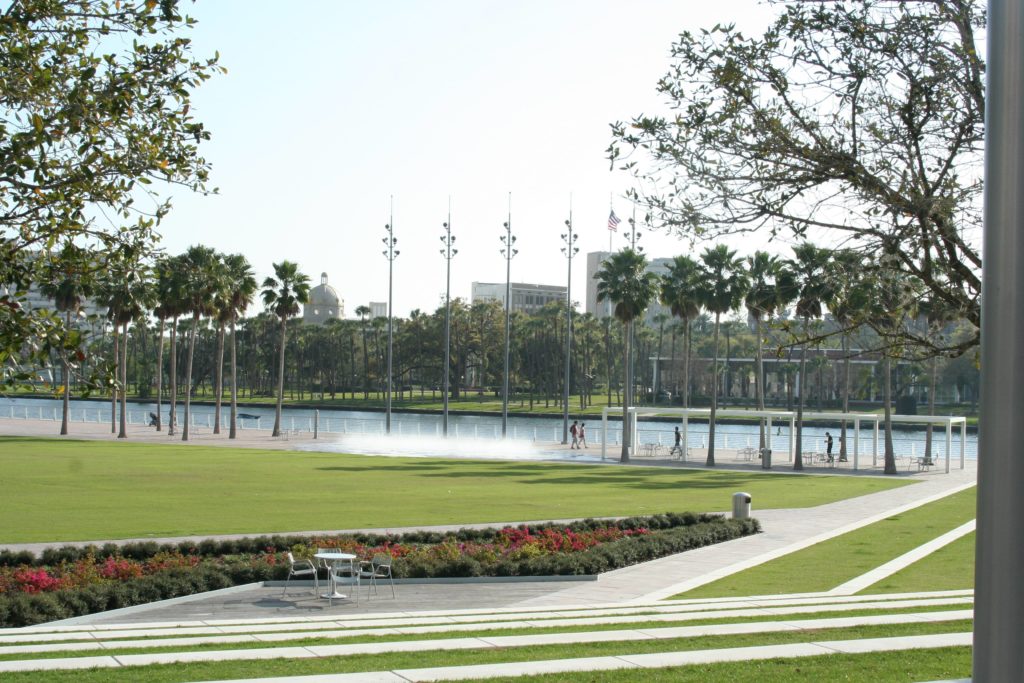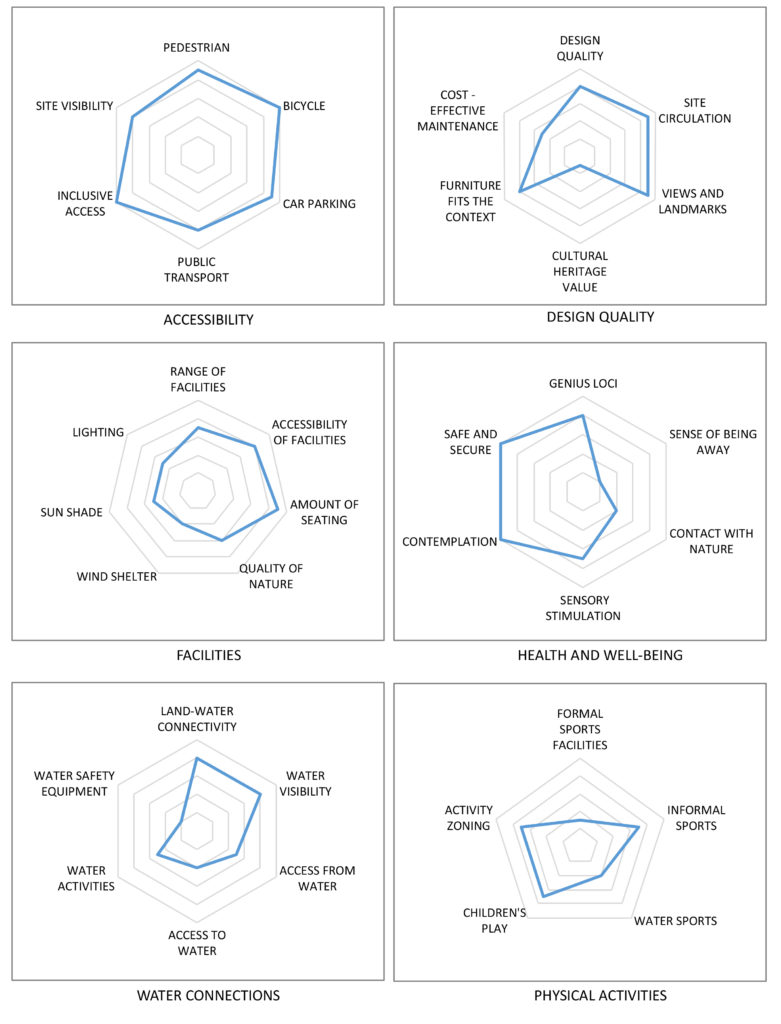
Architect
Thomas Balsley Associates
Type of Area
Large river with artificial banks
Land/water interaction
Promenade
Harbour
Pier
Built Environment Types
Moderately built
Moderate green
Scale of Impact
District/ neighbourhood
City
Regional
Intervention Scale (Spatial)
Moderate site
Project Types
Riverfront development
Outdoor Recreation
Public space regeneration
Urban/ Rural
Inner urban area
Visibility and Openness
Fully enclosed
Fully contained view
Outdoor art space in Tampa.
The Curtis Hixon park is an eight-acre (3.2ha) site created by relocating an art museum to the other side of the river and placing parking underground, thus unblocking access to the river. The site also provides a link to other trails along the Hillsborough River area and connects the David Straz Performing Arts Centre to the Glazer Children’s Museum and the Tampa Museum of Art.
The sloped Great Lawn area, with flexible perimeter terraced seating, provides a wide-open space as a venue for different programmes, performances and arts and music festivals. The area has thus gained a new identity as citizens recognise the role it plays as a public space. The development has also been a catalyst for opening of many new restaurants.
An extensive plaza provides a welcoming feature to the park and includes the first of two interactive fountains or “spraygrounds”, which are lit at night and provide somewhere to cool off in the summer. The children’s playground features an interactive NEOS 360 Ring, which combines video games with aerobic exercise.
Other facilities include a dog run and park, walking and biking trails, bike hire, a kiosk, a Pavilion building and toilets. The park therefore provides many opportunities for active recreation but also for relaxing, socialising and sunbathing with seating provided. Lounging areas or raised wooden decking has been provided in the centre of the lawn with views towards the river. Pathways slope down to the river allowing access to wheelchairs and pushchairs.
The sustainable construction involves the use of LED lighting and reclaimed water for irrigation. Vegetation has been kept to a minimum with planting on terraces around the lawn area and groves of trees for shading, although the grove of palm trees along the promenade clutters the view towards the river in an otherwise open space. The park also has a pier that leads people down near water, but mostly this is used for boating purposes, including a water taxi.
Perception and Meaning
Place identity
Imageability
Place attachment
Health and Wellbeing
Place affordance
Increases socialisation
Increased physical activities
Interaction with Water
Visual
Tactile: partly in water

The accessibility of the site is excellent, with sloped paving providing easy pedestrian and wheelchair access to the riverfront. The site visibility is slightly lower due to the cluttered look created by the trees on the promenade by the river. As a new park the cultural heritage is understandably low, but the overall design quality is high. The site is safe and secure despite the lighting restricted to the perimeter due to the good natural surveillance conditions of this gently sloped, wide open space.
Health and wellbeing for the site is overall rated good, although the sense of being away and contact with nature is low as it is a busy park with restricted planting. The main focus of the site is as a park by the river and therefore the site remit does not focus on connectivity to the water or physical water-based activities apart from the “sprayground” for children.
